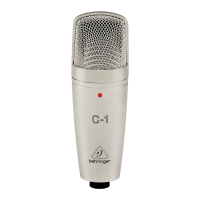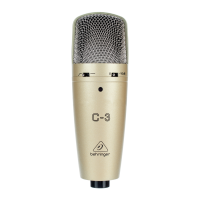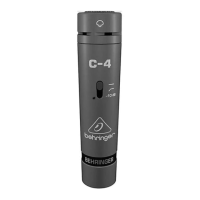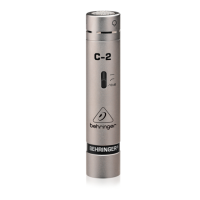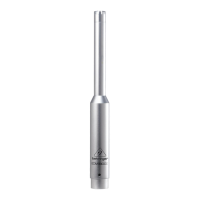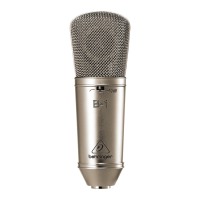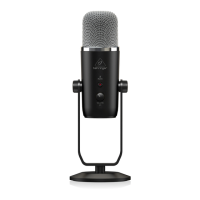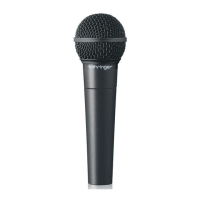STUDIO CONDENSER MICROPHONES C-2
3
4. PICKUP PATTERNS
Both microphones feature a capsule with a cardioid pickup pattern.
Microphones with this polar pattern are most sensitive to sound
coming from in front of the microphone, and also to a lesser extent
from the sides. Sound coming from behind the microphone will be
greatly attenuated. This makes the cardioid polar pattern most
suitable for recording individual instruments or vocals within a group.
The so-called proximity effect is typical for microphones with the
cardioid pickup pattern. Depending on the distance between the
microphone and the sound source, a slight increase in the lower
frequency range occurs. The shorter the distance, the more
pronounced this effect. By cleverly selecting the position and the
angle of your microphone, you can effectively manipulate the
proximity effect and thus affect how your recording sounds.
Experiment with various positions in order to gain more experience.
5. POSSIBLE APPLICATIONS
Both microphones have been matched to one another (matched
pair). Therefore, they are particularly well-suited for stereo
recordings. Regardless of whether you are miking an entire
ensemble or a single sound source (e.g. drums, piano or background
vocals), this pair of condenser microphones lets you achieve
outstanding spatial impressions in every recording session.
Of course, you can use your microphones individually as well. A
cardioid pattern capsule is often used in recording situations in
which several sound sources are present. Since this capsule
selectively tones down the pickup of sounds located to the side of
the microphone, this way you can achieve good separation of
sound sources, thus easily avoiding feedback.
6. LOW CUT-FILTER AND LEVEL ATTENUATION (-10 dB)
The C-2 studio microphones feature a switchable low-cut filter that
lets you eliminate low-frequency disturbances such as subsonic
noise. Set the switch to its middle position to activate the low-cut
filter.
A switchable level attenuation is provided on your C-2s for
applications in which the microphones are exposed to extremely
high sound pressures. When the switch is in its -10 dB position,
the level attenuation is activated.
When the switch is in its top-most position, the signal is not influenced
in any way.
6. LOW CUT-FILTER AND LEVEL ATTENUATION

